You are using an out of date browser. It may not display this or other websites correctly.
You should upgrade or use an alternative browser.
You should upgrade or use an alternative browser.
-
You can now help support WorldwideDX when you shop on Amazon at no additional cost to you! Simply follow this Shop on Amazon link first and a portion of any purchase is sent to WorldwideDX to help with site costs.
-
A Winner has been selected for the 2025 Radioddity Cyber Monday giveaway! Click Here to see who won!
Unusual Antenna performance
- Thread starter FlyBoy50
- Start date
A tuner certainly is an option. If using mobile whips though, a cheaper alternative is to simply adjust the length of the two as needed for an acceptable SWR. Some models (Like the Firestik II or the Skipshooter) have tuning screws on the ends which makes it real easy. My experience has been that coax works fine.
Last edited:
The advantage of using a tuner with an attic-based antenna is, build install and forget. No need to up/down in attic to "tune" the antenna for the desired bandwidth section.
Then if attic configuration is large enough in length and cross section distance, a loop/half square /bent dipole type configuration could be used.
The EDZ antenna (.64 wavelength) adds a little gain in some directions.
The use of a tuner/ladder line configuration does add some options not available when using coax as the feedline, as the feedline loss for a non-resonant antenna (EDZ/random size loop/random length on the legs) is not really an issue.
Then if attic configuration is large enough in length and cross section distance, a loop/half square /bent dipole type configuration could be used.
The EDZ antenna (.64 wavelength) adds a little gain in some directions.
The use of a tuner/ladder line configuration does add some options not available when using coax as the feedline, as the feedline loss for a non-resonant antenna (EDZ/random size loop/random length on the legs) is not really an issue.
I think DxEngineering sells the brackets to answer your question posted earlier.
Or a combination of mirror mount brackets.
73
Jeff
Or a combination of mirror mount brackets.
73
Jeff
I bought this ParaDynamics PDC5 years ago as a impulse buy to try it for SWR and Watt meter but never tried the matcher feature. Is this what you call a tuner? Anybody have any experience with this unit.as for small VSWR issue,, put an antenna tuner/coupler inline at the shack and tune vswrs down.
no need climb into the attic anymore,,search zep and extended zepp,, the longer the wire the more gain you get in certain directions.
What is ladderline? I never heard of it before.instead of using coax use ladderline to feed the attic dipole, minimum loss in the vswr mismatch using ladderline.

450 Ohm - Balance / Ladder Line
Ladder line or "window line" is a variation of twin lead which is constructed similarly except that the polyethylene webbing between the wires which holds them apart has rectangular openings ("windows") cut in it. So the line consists of two insulated wires with bands of plastic holding them together every few inches, giving it the appearance of a ladder. The advantage of the windows is that they lighten the line, and also reduce the amount of surface on which dirt and moisture can accumulate, making ladder line less vulnerable to weather-induced changes in characteristic impedance. The most common type is 450 ohm ladder line, which has a conductor spacing of about an inch. ref. wikipedia.org
The All Band HF Doublet - 80 thru 10 Meter Ladder Line Multiband Antenna
www.hamuniverse.com
Yes, the " matcher" is a " tuner".I bought this ParaDynamics PDC5 years ago as a impulse buy to try it for SWR and Watt meter but never tried the matcher feature. Is this what you call a tuner? Anybody have any experience with this unit.
This model is simply a couple compression capacitors switched inline with your antenna.
If you antenna is close, it will help, but it's not going to handle much power or have a wide matching range.
73
Jeff
Yes the antenna SWR is close enough to try it as a experiment but they don't give much instruction on how to go about turning the Tune & the Load knobs and what to look for. By the looks of it it should handle 100 watts but I will try barefoot to learn and see what it is about. I'm still going to get in the attic because it is my Nature not to short cut and the dipole only needs a little shortening,but before I go up my curious mind will force me to try the matcher to satisfy my thirst for knowledge and perfection !If you antenna is close, it will help, but it's not going to handle much power or have a wide matching range.
Hey thanks for giving this HillBilly some Education. LOL450 Ohm - Balance / Ladder Line
Ladder line or "window line" is a variation of twin lead which is constructed similarly except that the polyethylene webbing between the wires which holds them apart has rectangular openings ("windows") cut in it. So the line consists of two insulated wires with bands of plastic holding them together every few inches, giving it the appearance of a ladder. The advantage of the windows is that they lighten the line, and also reduce the amount of surface on which dirt and moisture can accumulate, making ladder line less vulnerable to weather-induced changes in characteristic impedance. The most common type is 450 ohm ladder line, which has a conductor spacing of about an inch.
Ladder line or "window line"
Twinlead, which has two wires held apart by a solid piece of material, no openings.
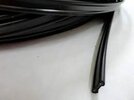
Window Line, which is basically Twinlead with openings in said material.
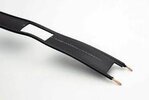
And Ladder Line, which as stated above looks like a ladder.
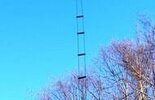
In the past, these were seen as three very different things, but today even Wikipedia (as quoted above) and places like DX Engineering conflate Window Line and Ladder Line as being the same thing.
Historically, Ladder Line, which is now being referred to as "Open Wire Line" on Wikipedia, was homemade, although there are places today where you were and are able to buy it directly. This got the name "Ladder Line" because it looked like a ladder, hence the image above.
Window Line, which is apparently now considered "Ladder Line" does not look like a ladder (at least to me), has openings, but also has areas that aren't open, essentially Twinlead with openings cut into the separator material. This is never hand made, you can take some Twinlead and put the openings in it yourself, but even if that is the case, it is only modified from something that is premade, not made from scratch like ladder line historically is.
How things change with time. I see this change as part of what I call the "coaxification" of antenna knowledge...
Anyway if you have either a very long run, or a high SWR to dial in, Window Line is worth its weight in gold, and ladder Line is worth triple its weight in gold. (I think I need to point out here that by high SWR, I'm not merely talking about things like 3:1 or 5:1, but SWR readings that are often far higher than 10:1, in other words, the type of readings that very few if any SWR meters for CB will ever come close to showing. Parallel feed line such as Window Line and Ladder Line is a far different animal than coax...)
The DB
I'm sure there is adapters available to change from flat line to coaxial connectors but I will probably never need such items as they are for the Pros !
Just something that can be used instead of coax that is not often thought about if all you have ever used is coax.
Radio ops in areas that do not have money to spend often use wire antennas and home made ladder line to feed it.
One big spool of wire and something non conductive to hold it apart is about the most economical feed line you can find.
The bonus is it is very low loss over long runs.
Lol
Years ago when I first started playing with CB radio and I first learned of coax and it's use and thought that if I did not put my signal down a coax "garden hose" with the shield around it all my signal would " leak out".
I thought how the hell could you feed something with open wire?
I learned like everyone else, it's fun.
Yep, they make adapters or you can just home brew.
73
Jeff
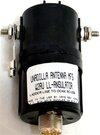

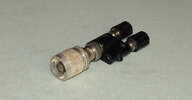
Its best to use a balun, but you can go straight from one to the other like AudioShockwav shows. You can also get antenna tuners that have said balun and parallel feedlline outputs built in, and their are also link-coupled antenna tuners as well. Its actually primarily the domain of hobbyists that use said devices, although mostly on the ham side where they need to tune a single antenna to multiple different ham bands across the HF spectrum. Using such a device for a single band antenna such as for CB radio really is counter productive, not that it can't be done... I think there is a brand of antenna tuners specifically designed to work on the CB band, and won't work anywhere else... I'll have to dig around and see if I can find them again...I'm sure there is adapters available to change from flat line to coaxial connectors but I will probably never need such items as they are for the Pros !
The DB
dxChat
- No one is chatting at the moment.
-
dxBot:brandon7861 has left the room.
-
-
-
-
@ boniface95:Hi there, I just posted this question, if anyone has time to check it out, i'd really appreciate some feedback. https://www.worldwidedx.com/threads...-radio-transmitters-in-the-same-space.270736/



